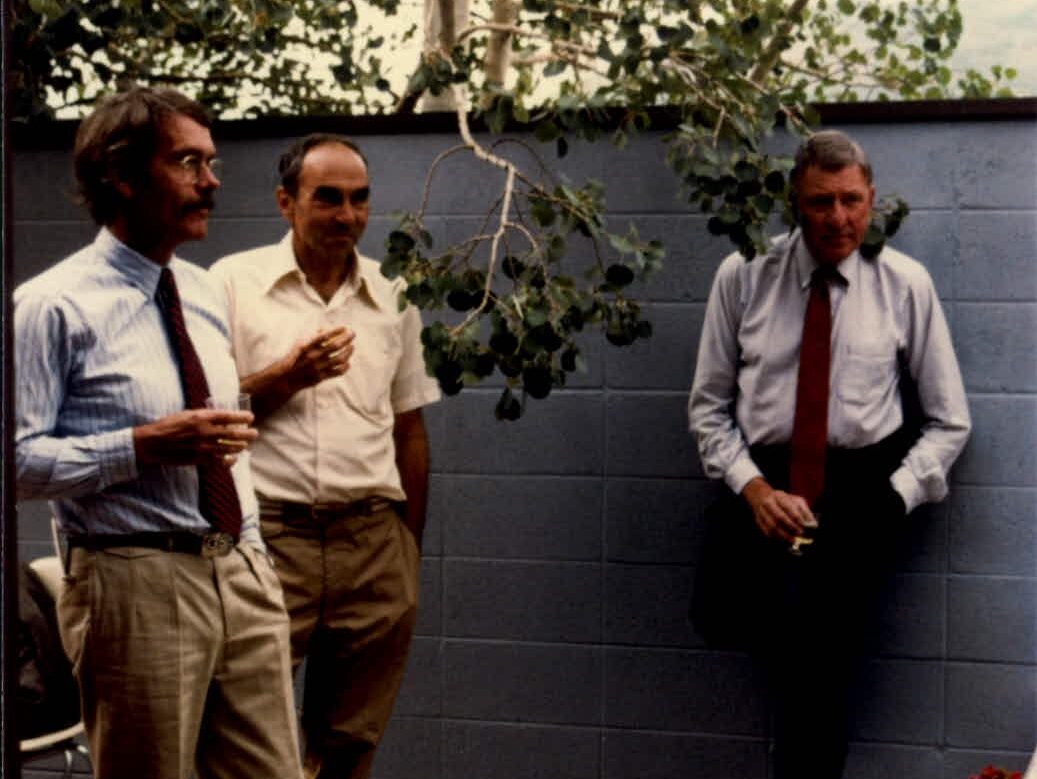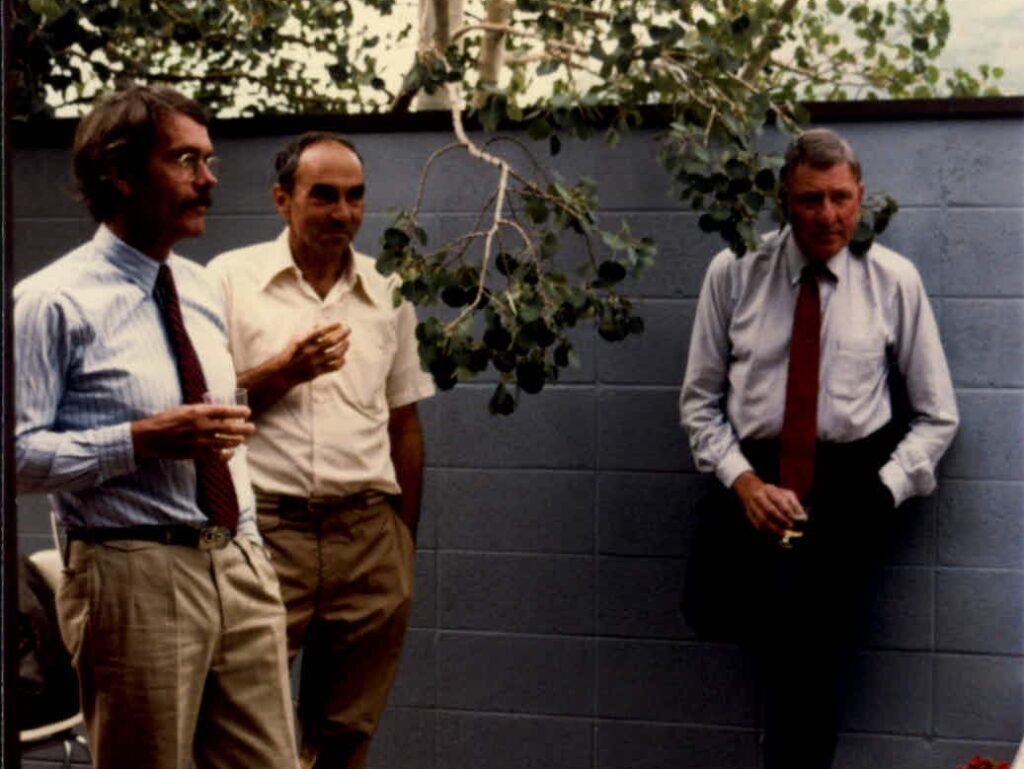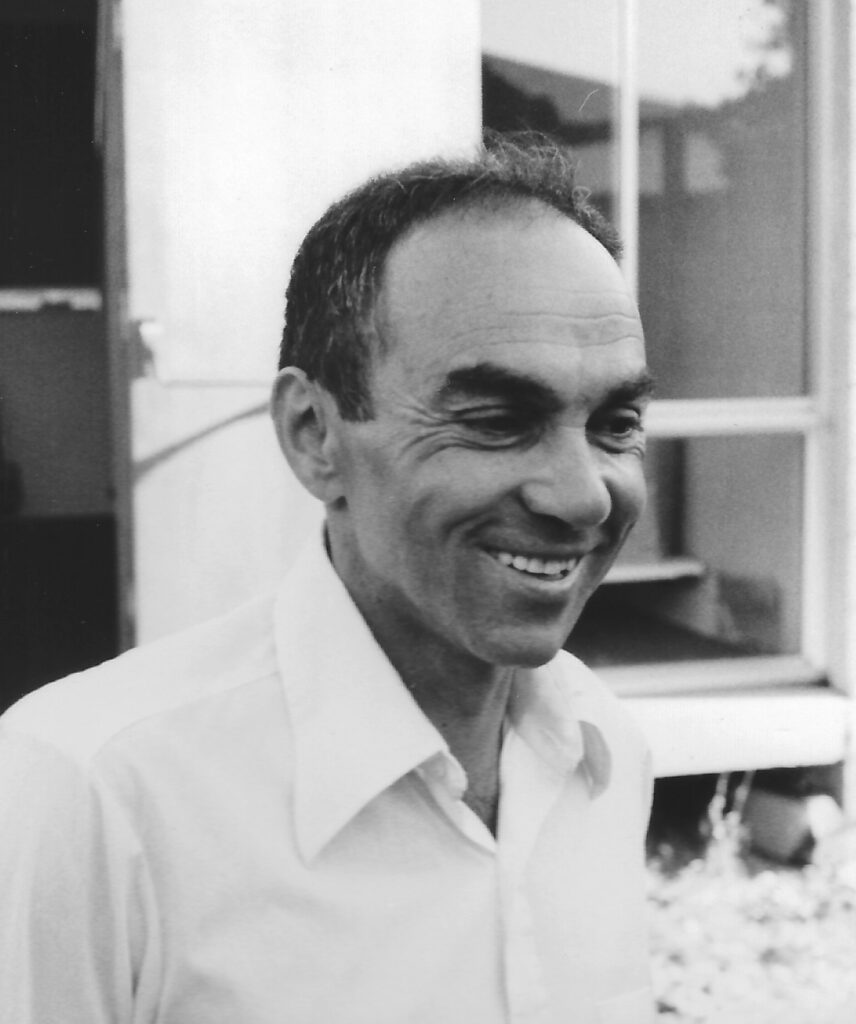I have been a mountain man all my life and many of my friends have been mountain people. Back in 1960, when I was at Carnegie Tech, I had two friends who were both physicists and mountain men, Michael Cohen and George Stranahan. They did not know each other then, but the hand of Fate was about to do its work. I had been close to Mike ever since we had been together at Caltech for two years, he as a grad student and I as a postdoc. He was now at Penn and liked to call himself The Best Jewish Mountain Climber In Eastern Pennsylvania. Many times I had heard him express his desire to spend his summers doing physics in the mountains, instead of being cooped up in a hot, humid office in Philadelphia. George was a student of my friend Dick Cutkosky at Carnegie Tech. He was more mature and more interesting than most of the other students, which made me stop by his desk and talk with him once in a while. George had a foothold in Aspen, a house in the mountains nearby, and connections with the people at the Aspen Institute for Humanistic Studies. One day he told me that he had been approached by them, that they were considering the possibility of having a branch of the AIHS devoted to physics or perhaps more general science, that they were soliciting his help with this. He asked whether I thought that such a thing was possible. Mark this point as t=0. I decided that I needed to introduce George and Mike to each other.
Which I did. The chemistry was instantaneous. The three of us started to discuss possible scenarios and to make plans. Soon George arranged a meeting with the executive director of AIHS, Bob Craig. I think that it took place at the Pittsburgh airport. Things took off from there. Eventually, we met the chairman of the board. My memory may be betraying me, but I think that his name was R. O. Anderson.
We realized that, if we were going to have any chance of being allowed to take our grant money along to do physics in the mountains, we needed a board of directors made up of well-known, well-respected, unimpeachable physicists. This was a serious and scary task for young researchers like us. The first person we asked was a young professor at Carnegie Tech with whom I had shared an office for several years and who was already well on his way to becoming one of the world’s most respected weak-interactions physicists, Lincoln Wolfenstein. Yes, weak interactions were super-hot in 1960. When I described our project to Lincoln, he said yes immediately. This was a great coup. And he has been connected with ACP ever since.
The rest of the work of building the original infrastructure was done by Mike and George. They are the ones who are competent to describe it and I shall not try. George was holding the Aspen end of things, while Mike was dealing with assembling the best possible group of interested physicists. My part amounted mostly to taking delight in watching the baby grow and preparing for a one-year sabbatical in France, for which I had gotten an NSF Senior Postdoctoral Fellowship.
The first summer of operation was 1962. I was not there because I was still in France. But I had talked my friend Jim Langer into going there with his family, and he gave me a full report. It sounded marvelous. I went in 1963, and so did Jim again. I was in charge of assigning people to houses, a difficult job then. I don’t even want to think about how hard this job must be for the person who does it now! There was one other problem which turned out to be a sticky one: how to maintain a suitable image with respect to the granting agencies and especially the NSF. The theoretical physicist in charge at the NSF at that time was Wayne Gruner, and he was more than a little suspicious of this business of mixing physics with mountains. This gave rise to some interesting stories. “Somebody” played a deadly joke once. On a beautiful sunny morning when several of us had gone hiking or climbing, he impersonated Wayne Gruner over the telephone and announced that, since he happened to be in the neighborhood, he was planning to come over to the Institute in a couple of hours to take a look. Imagine the panic! Just imagine! “Oh yes, Wayne, sometimes we hike on a weekday, but sometimes we do physics on Saturdays and Sundays too.” Equally funny, in my opinion, was the time that the true Wayne complained over the phone that Bethe did not seem to be doing any real physics in Aspen, that he had just gone there to take a vacation. It was Hans Bethe he was talking about! Imagine one of the most productive theoretical physicists in history being accused of not working hard enough. I still chuckle every time I think about it.
Things have changed. Not only has the place become eminently respectable, but its prestige is immense. I have not been there since 1965, but my son Harold has been there repeatedly, besides the times when he was a child. I only wish that there was a Nobel prize for the best marriage brokers. I would be rich then!



